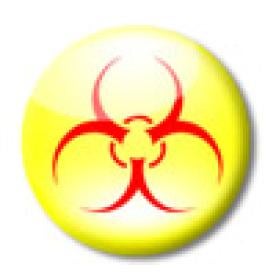The European Commission is expected to present, in early 2017, a proposal to amend the Restriction of Hazardous Substances (RoHS2) Directive. The amendment would remove the July 22, 2019 deadline for the supply and resale of non-compliant electronic medical devices, in-vitro diagnostic medical devices (IVDs) and monitoring and control instruments that were first marketed in, or imported into, the European Union or the European Economic Area (EU/EEA) before their RoHS2 cut-off dates. If adopted, certain second-hand devices, as well as refurbished devices may continue to be marketed beyond 2019.
Directive 2011/65/EU on the Restriction on the Use of Certain Hazardous Substances in Electrical and Electronic Equipment (RoHS2 Directive) aims to limit the presence of harmful substances in electronic products and prohibits the marketing in the EU/EEA of electrical and electronic equipment (EEE) that contains lead, mercury, cadmium, hexavalent chromium, polybrominated biphenyls, and polybrominated diphenyl ethers, subject to certain concentration limits and exempted substance applications. These RoHS2 restrictions also apply to EEE marketed by manufacturers of medical devices and laboratory equipment.
The RoHS2 Directive bans the import and first marketing of devices containing RoHS restricted substances on the following states: (i) July 22, 2014 for electronic medical devices and electronic monitoring and control instruments; (ii) July 22, 2016 for electronic IVDs; and (iii) July 22, 2017 for electronic industrial monitoring and control instruments. In addition, the Directive was amended to also prohibit the import and first marketing of each of these devices and instruments as of July 22, 2021 if they contain butyl benzyl phthalate, dibutyl phthalate and diisobutyl phthalate.
Moreover, the current text of the RoHS2 Directive also prohibits the “supply” of non RoHS-compliant electronic medical devices, IVDs and (industrial) monitoring and control instruments after July 22, 2019. This means that these electronic devices may not be further supplied in the distribution chain or resold after July 22, 2019 even if they were first imported or marketed in the EU/EEA before July 22, 2014 (for medical devices and monitoring and control instruments), July 22, 2016 (for IVDs), or July 22, 2017 (for industrial monitoring and control instruments). This 2019 deadline would severely restrict the continued supply of new devices that are still in the supply chain, as well as the resale and second-hand market of used, repaired or refurbished devices.
To correct this, the European Commission is expected to present a proposal that would remove the July 22, 2019 deadline for all non-compliant electronic medical devices, IVDs and (industrial) monitoring and control instruments that were first marketed in, or imported into, the EU/EEA before their cut-off dates. The proposal would achieve this by deleting Article 2(2) of the RoHS2 Directive and replacing the current wording of Article 4(3) with:
“Paragraph 1 shall apply to medical devices and monitoring and control instruments which are placed on the market from 22 July 2014, to in vitro diagnostic medical devices which are placed on the market from 22 July 2016, to industrial monitoring and control instruments which are placed on the market from 22 July 2017 and to all other EEE that was outside the scope of Directive 2002/95/EC which is placed on the market from 22 July 2019.”
The Commission’s proposal is expected to also introduce other amendments to the RoHS2 Directive. Among other things, it would provide an exemption for non-compliant spare parts and cables for the repair, reuse updating of functionalities or upgrading of so-called “newly in scope EEE” first marketed in, or imported into, the EU/EEA before the cut-off date. The category of so-called “newly in scope EEE” is a “catch-all clause” that includes equipment that does not fall under any of the ten other specific categories listed in Annex II to the RoHS2 Directive, such as IT and telecommunications equipment, consumer, electrical and electronic tools, medical devices, or monitoring and control instruments. Potential examples are devices intended to analyze DNA material, analyzers used for screening or forensic purposes, or interface equipment between a patient’s computer and its self-testing IVD medical device. The exemption for non-compliant spare parts and cables already applies for medical devices, IVDs and (industrial) monitoring and control instruments and EEE other than “newly in scope EEE.” The proposal is also expected to make clear that the exempted applications for “newly in scope EEE” means the devices may be marketed for an additional five years, beginning July 22, 2019, unless a shorter period is specified.
The Commission’s proposal is also expected to delete the deadline for the Commission to decide on the renewal of existing application exemptions.
The European Commission is expected to present its proposal to amend the RoHS2 Directive as part of a Circular Economy package of legislative proposals. The legislative proposal must be adopted by the European Parliament and Council through the ordinary legislative process. While it is likely that the Parliament and Council will adopt the proposal in first reading within eighteen months, such adoption may take longer and/or additional amendments to the RoHS2 Directive may be introduced.



 i
i

